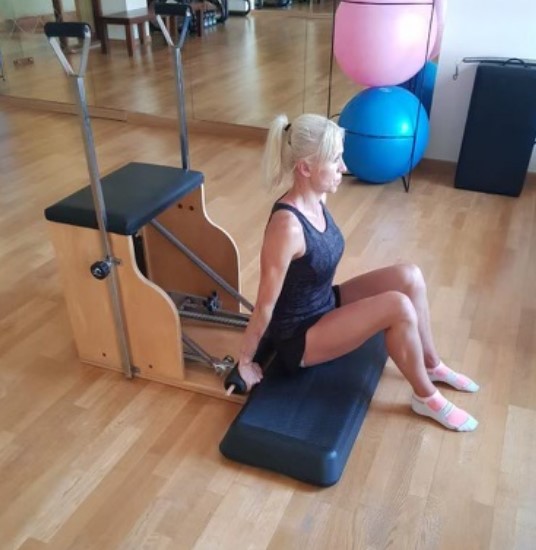HYPERMOBILITY from the ‘MAST’ cell gene needs to be managed carefully as the body grows and ages, to maintain efficient posture and good Biomechanic’s.
CiONE Postural Rejuvenation, has long understood that joint ‘mobility’ is often confused with joint ‘flexibility’- and both of these ‘traits’ provide a “special advantage” – if they are classed as ‘Hyper-mobility or ‘Hyper-flexibility’ – to the elite dancers and athletes; as they enable these type of bodies to avoid injury and ‘bend around’ their skeletal dysfunctions.
However, as we move forward into the “National Heart Awareness” month of February 2023; these genetic traits can be too much of a good thing; as an increasing body of research suggests a surprising link between high levels of Hyper-mobility, hyper-flexibility and anxiety, creating a higher risk of heart strokes and issues.
A study published a few years ago; highlighted that this association has some gravitas, ie; finding that people with hyper-mobile joints haveheightened brain activity in “anxiety regions”, which in turn, (through more recent research), can then bring on ‘shallow’ breathing, higher blood pressure and in extreme cases ‘heart’ restrictions/ailments. Joint hypermobility, which affects approximately 20 percent of the global population, ensures that the body type, has a large range of motion when
moving dynamically.
Hyper-mobile people – often, can maneuver different areas of their skeletal structure differently. For example; touch their thumb to their inner forearm or place their hands flat on the floor without bending their knees.
These trait’s we now know to be ‘genetic’ and originate from the MAST cell gene, giving the ‘body type’ higher levels of collagen, (the main structural protein of connective tissue and producer of ‘water-retention’ in the body) and Higher levels of Histamine, (the main trigger for allergies and intolerances. Indeed, being Hyper-mobile, has long been linked with an increased risk for asthma, allergies to cats, dogs, horses, pollen etc; as well as bringing on ‘irritable bowel syndrome’, flatulence and bloating – amongst other Pelvic Pain disorders.
“Hypermobility from the Mast Cell genetic catalyst, has a major impact on the whole body holistically,” says Timothy King, a part time Professor and Consultant Biomechanist on Harley Street, London. “Creating ailments and dysfunctions within the body and mind, that bring on high levels of anxiety and stress, which in turn effect the cardiovascular system – everything is connected…” With this in mind, the link between high anxiety and Hyper-mobility began back in 1993, when a researcher “Rocío Martín-Santos”, discovered that patients with anxiety were 16 times more likely to have loose and lax joints.
A later study, found that individuals with joint hypermobility had a bigger ‘amygdala’, (a part of the brain that is essential to processing emotion, especially fear). This research went on to state that “hypermobile participants displayed heightened neural reactivity to sad and angry scenes in brain regions creating an increase in anxiety. This increased anxiety in turn feeds a bodily increase in the Vagal nerve and “fight-or-flight” reactions to trauma and anxiety, which creates intrinsic musculoskeletal spasms – a direct link to dysfunctional Biomechanics ie; poor posture.
The stress that then occurs within the hyper-mobile and hyper-flexible joint, affects the blood vessels encouraging an accumulation of blood in the veins and Paniculosis (microscopic ‘Oedema’), within the fascia of the leg muscles.
This ‘pooling’ of blood and Paniculosis – can then lead to an exaggerated cardiovascular ‘response’, asthe body attempts to maintain the output of the blood from the heart; thereby increasing the blood pressure and putting strain on the heart and cardiovascular system. When the heart has to work “extra hard” just to circulate blood, it brings the entire body onto the verge of a Vagal nerve “fight-or-flight” reaction, requiring very little to set off panic.
Therefore, if CiONE Postural Rejuvenation can release the intrinsic musculo-skeletal spasms, realign the mechanics of the skeletal structure, and utilize the Japanese Ancient Therapy of Amatsu to calm the inner angst and ‘still’ the anxiety within a Hyper-mobile body type; then the high blood pressure declines, the cardiovascular system stops ‘over working’ and the heart becomes less at risk of strokes or attacks.
In conclusion then, it can be suggested that a patient’s ‘mental anxious state’, or high blood pressure and heart ailments – could have purely started and commenced from a physical or skeletal dysfunction exacerbated by the ‘Hyper-mobile DNA’ of the patient. In other words created from ‘physical’ and ‘skeletal’ origins.

